Tuning in: The day Ireland got its own radio station
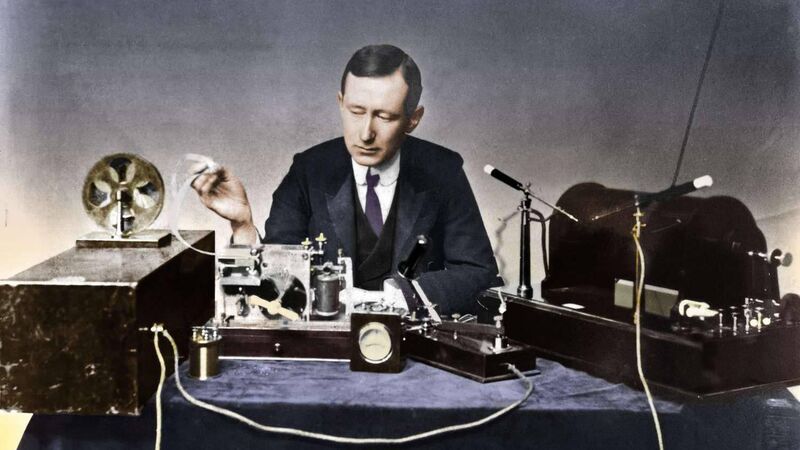
Guglielmo Marconi with his apparatus, including (right) 10-inch induction coil spark transmitter and (centre) morse inker and grasshopper (Getty Images)
Shortly after 11 a.m. on Tuesday 14 August 1923, a voice, “clear and distinct”, greeted listeners: “2BP speaking”.
With those words from Louis Wilson of the Marconi Company, the Royal Marine Hotel, Dún Laoghaire, booked its place in broadcasting history.
Having installed a transmitting studio and aerial in its main tower, the Hotel began to relay news items, messages and songs to visitors at the Royal Dublin Society horse show.
Eighteen-year-old soprano Renée Flynn recalled: “They set up a piano in a room in the Hotel, and they had a telephone, and we sang into that telephone... The people at the RDS paid fourpence or sixpence, or whatever they paid then, to go into a little room and put on headphones to hear us singing”.
The Hotel also broadcast “high-class” concerts that could be received in the Wellington Hall, Ballsbridge.
The ‘receiver’ at the horse show and in the Hall was referred to as a ‘wireless’ because there were no wires linking it to the transmitting station in the Hotel.
Others preferred ‘radio’, as it worked by radiating electromagnetic waves.
“For the first time, Irish audiences could hear local voices and Irish music on their own radio station”, writes Eddie Bohan (A Century of Irish Radio, 2018).
But in reality, Ireland had been “at the forefront” of wireless technology for many years, “mainly due to its location as an island on the edge of Europe”.
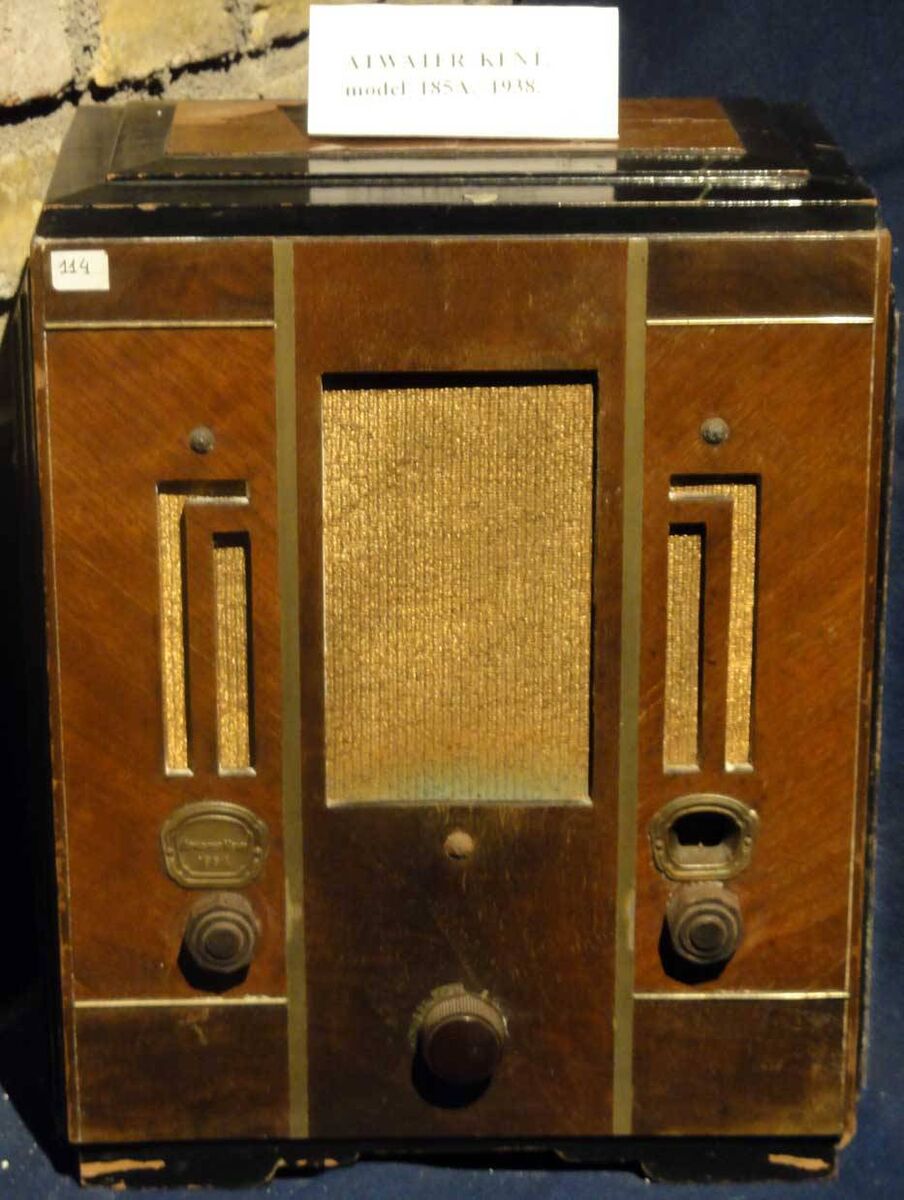
We’ve got Reverend Nicholas Callan from Dromiskin, Co. Louth, to thank for inventing two essential components still used in radios today: the induction coil that produces high-voltage pulses from a low-voltage supply (1836), and the self-exciting dynamo that generates a magnetic field (1838).
In 1893, another Irish churchman, Michael F. O'Reilly (Brother Potamian) from Bailieborough, Co. Cavan, transmitted a wireless message between two rooms in De La Salle College, Waterford.
“All that is now needed”, he somewhat understated, “is to put up machinery powerful enough to send messages around the world”.
Italian inspiration When he was 24, Guglielmo Marconi (whose mother, Annie Jameson, hailed from Enniscorthy, Co. Wexford) made Ireland a base for his experiments.
Establishing his first broadcasting station on 6 July 1898 in Ballycastle, Co. Antrim, he successfully communicated through thick fog with Rathlin Island.
A fortnight later, he set up another station on a tugboat, ‘The Flying Huntress’, from where he sent over 700 messages reporting on the Kingstown Regatta.
Once picked up on shore, the results were telephoned to the offices of the Dublin Express. Another Marconi station at Crookhaven, Co. Cork, helped ships entering and leaving Cobh harbour.
The same year Marconi set up his Antrim station, Colonel Meade Dennis from Baltinglass, Co. Wicklow attended a lecture in Dublin entitled ‘Signalling through space without wires’.
Smitten by the radio bug, he went home and constructed a 'spark transmitter' and receiver.
It was one of the world's first pirate radio stations, capable of sending messages over 70 yards – almost the width of a football pitch!
The house was recently sold, and his equipment donated to the Computer and Communications Museum of Ireland, at NUI Galway.
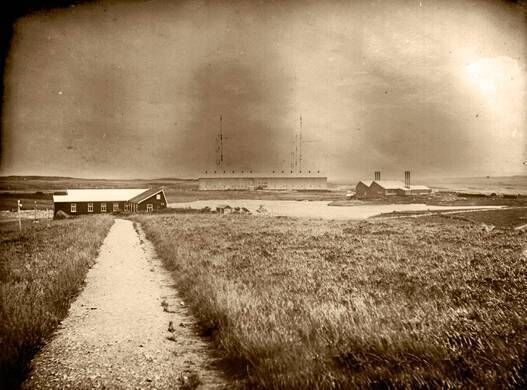
Situated in bog lands on a lonely headland at Derrigimlach, three miles from Clifden, Co. Galway, once lay a huge Marconi transatlantic wireless station, with eight 210 feet-high wooden aerials, giving off terrific sparks which could be heard far into the distance.
Following its opening on 17 October 1907, it quickly developed as a hub for contacting Glace Bay in Nova Scotia, 2,500 miles away – an equally barren part of Canada.
During the Easter Rising, 1916, Ireland became the first country in the world to use radio to proclaim itself an independent state.
Successfully circumventing the British media blackout, the station broadcast from the disused Irish School of Wireless Telegraphy above Reis’s the jeweller on Abbey Street, one of half a dozen licensed wireless schools in Ireland – two of which were situated in Cork City.
Its first bulletin, prepared by James Connolly on Tuesday 25 April, read: “Irish Republic declared today in Dublin. Irish troops have captured city and are in full possession. Enemy cannot move in city.”
Hour after hour the garrison continued to read the message in the hope that ships would pick it up and relay it to America.
The transmitter’s importance to the rebels is clear from Connolly’s order: “The main purpose of your post is to protect our wireless station”.
But its tall aerial meant the British had no trouble identifying the building. By Wednesday evening, 26 April, the station was in flames, and broadcasts ended.
Interest in wireless broadcasting grew in the years following the Rising, and during the early 1920s, a flurry of newspaper adverts offered demonstrations, and “very cheap” valves, batteries, and loudspeakers.
A wireless enabled ships in distress to summon help, family members to be summoned to the bedside of a sick relative, and Mick McQuaid to advertise his mild mixture – “the sweetest-smoking tobacco there is”.
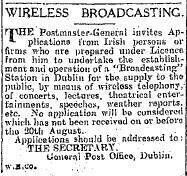
An announcement on the front page of The Cork Examiner, 16 August 1923, welcomed businesses in the new Irish Free State to submit applications for a broadcasting station in Dublin.
But should it be public or commercially owned? Some people were unconvinced of the benefits of wireless on land at all.
Having sampled broadcasts from Britain and the east coast of America, listeners frequently complained about interference, or boring schedules.
Besides, living room wireless sets were very expensive, none were manufactured in Ireland, and a tax of 30% was levied on each set imported.
While radio stations were opened in UK and France (1922), Germany (1923), Italy (1924) and Portugal (1925), Ireland had to wait until 1 January 1926, for its first legal station, 2RN, to begin transmitting from Dublin.
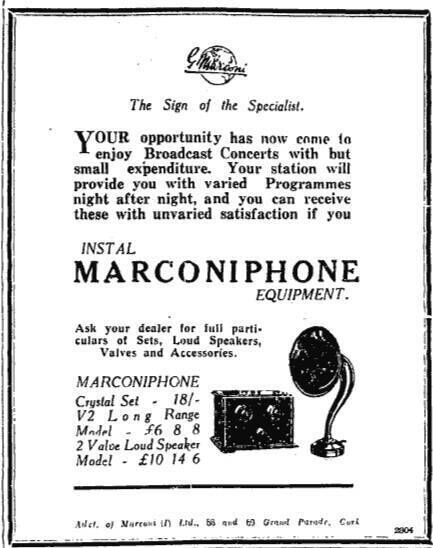
In view of the great flurry of early initiatives, says Bohan, it's ironic that Ireland – “stifled” by the War of Independence and the Civil War – ended up being one of the last countries in Western Europe to provide a domestic radio service.
- Eddie Bohan’s new book, The History of 2BP, will be launched on Saturday 12 August at 7 p.m. in the very room where the studios were located in the Royal Marine Hotel, Dún Laoghaire, Special guest: ‘Dancing With The Stars’ judge Lorraine Barry.







